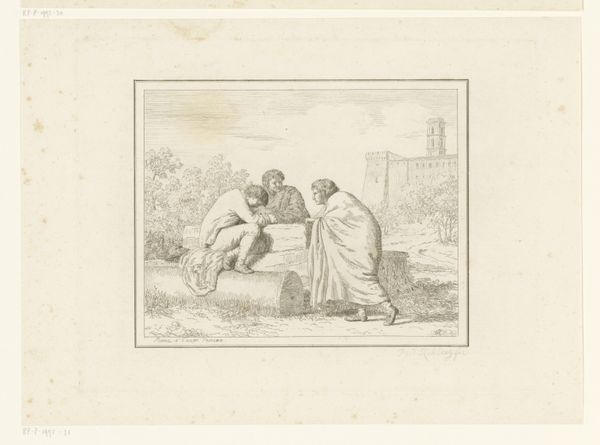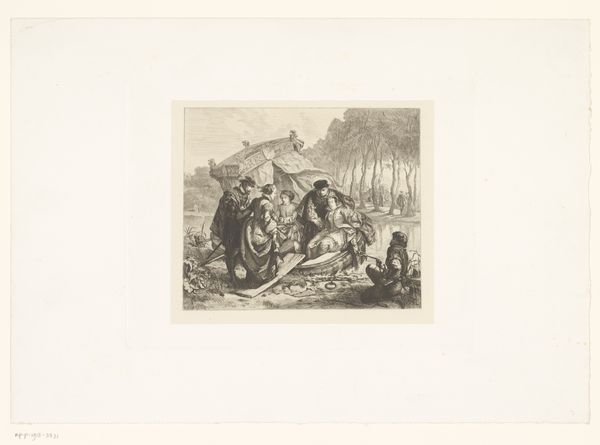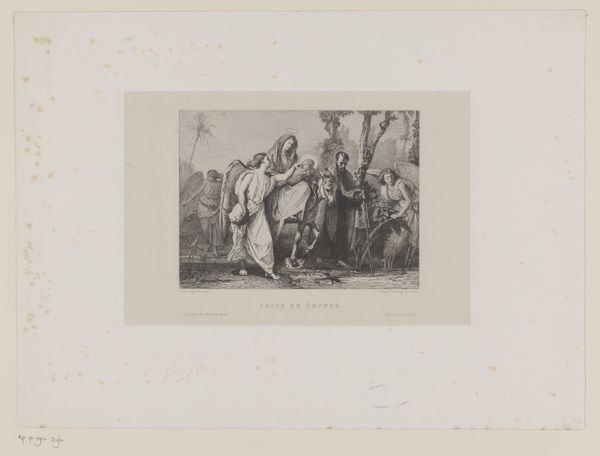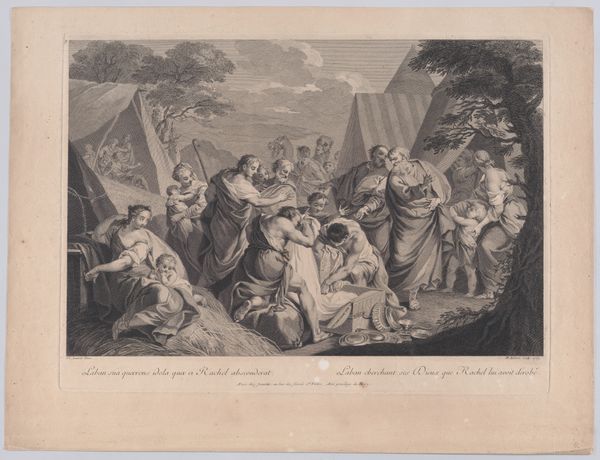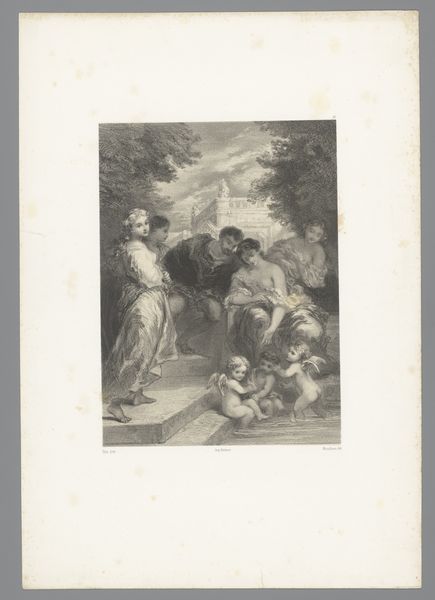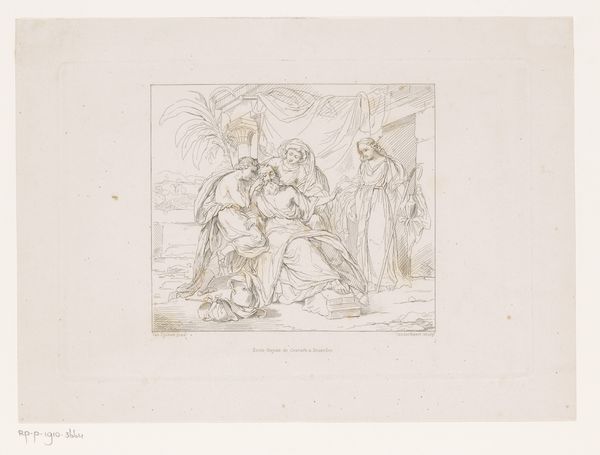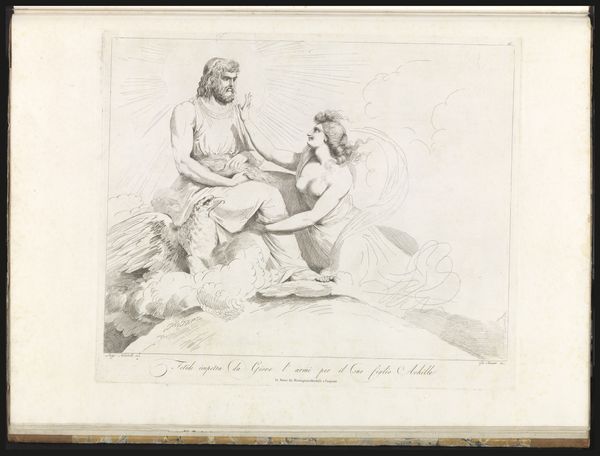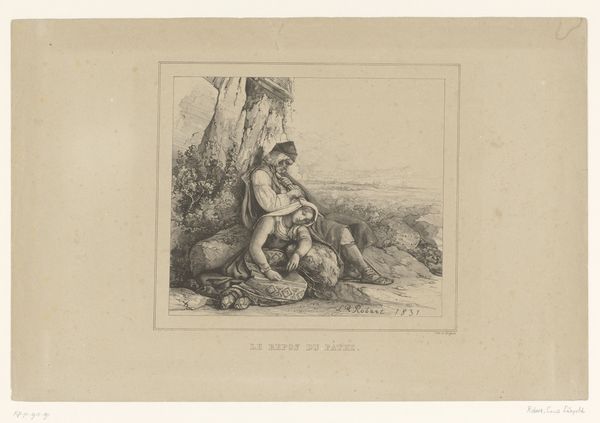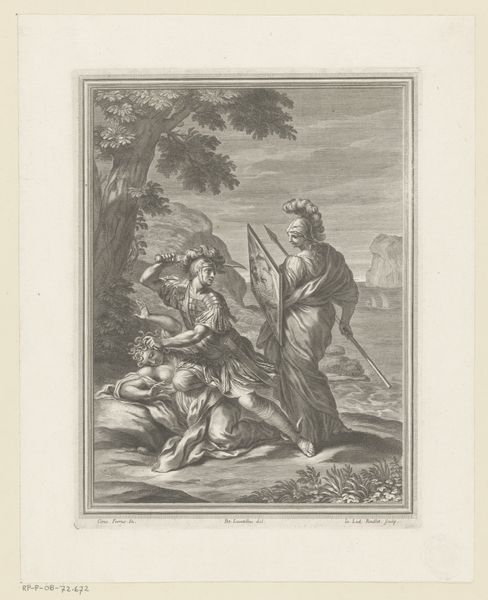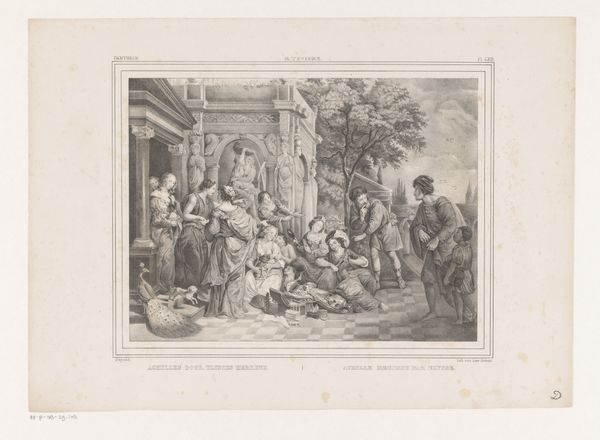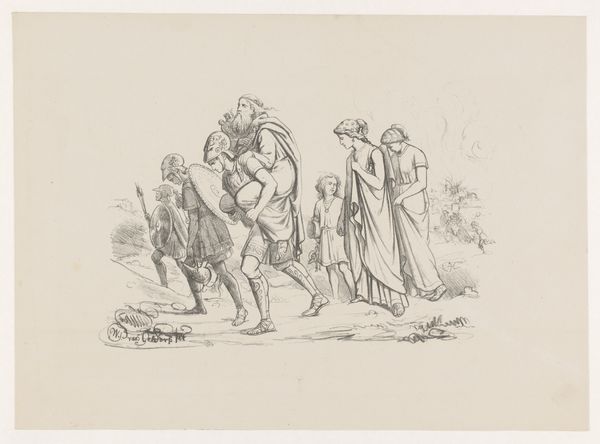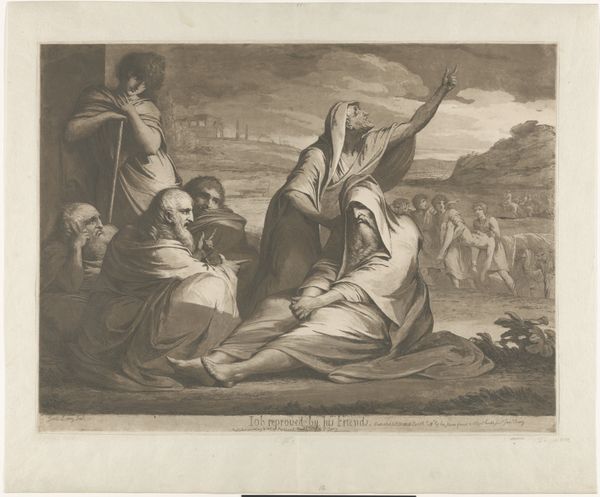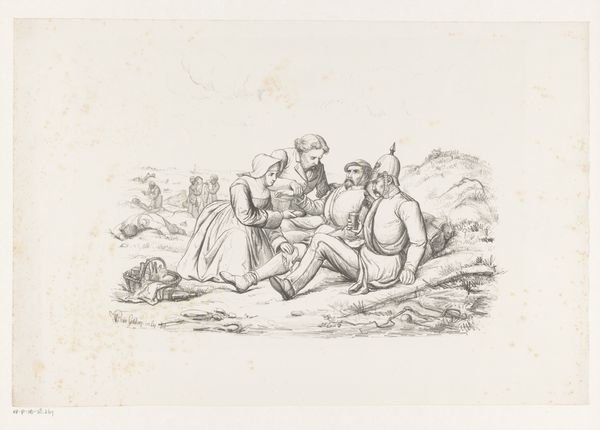
Napolitaanse stedenmaagd tussen twee saters gezeten 1807 - 1892
0:00
0:00
drawing, print, engraving
#
drawing
#
allegory
# print
#
figuration
#
pencil drawing
#
romanticism
#
line
#
genre-painting
#
history-painting
#
engraving
Dimensions: height 378 mm, width 493 mm
Copyright: Rijks Museum: Open Domain
Editor: So, this engraving by Louis Pierre Henriquel-Dupont, created sometime between 1807 and 1892, is called "Napolitaanse stedenmaagd tussen twee saters gezeten," or "Neapolitan City Virgin Seated Between Two Satyrs." It depicts this regal woman flanked by, well, satyrs, in a landscape. The mood is surprisingly calm, considering the company she’s keeping. What do you see in this piece? Curator: The immediate visual symbol that grabs me is the central figure, the city virgin. Consider the archetype – a female figure representing a city or nation – often embodying virtues of protection and abundance. Then, observe the satyrs. They’re primal forces, instinctual and untamed. Doesn't this juxtaposition speak volumes about the forces at play within Naples itself, perhaps a tension between civilization and raw, perhaps even chaotic, energy? Editor: That's interesting, a visual representation of internal conflict. So the virgin represents the aspirations of Naples, while the satyrs... embody what aspects exactly? Curator: The satyrs, traditionally associated with Dionysus, can be interpreted as embodying the city’s inherent passions, its celebrations, but perhaps also its potential for disorder and wildness. Are they a threat to the Virgin’s serenity or a necessary, vital aspect of the city’s character? Look at their placement; they flank her, yes, but are they holding her captive or propping her up? The artist prompts the viewer to ask, how is this civic identity influenced by inherent instincts? Editor: That adds another layer – they aren't just there, they’re interacting with the city figure itself. It's fascinating how much complexity Henriquel-Dupont packs into a single image using these traditional symbols. Curator: Exactly! It's about deciphering the relationship between these visual cues and how cultural memory influences their interpretation, and that influences our perspective. What have you noticed about other recurring Neapolitan visual themes? Editor: Well, I hadn’t before, but I will now! This makes me want to research Neapolitan iconography and symbolism in general.
Comments
No comments
Be the first to comment and join the conversation on the ultimate creative platform.
